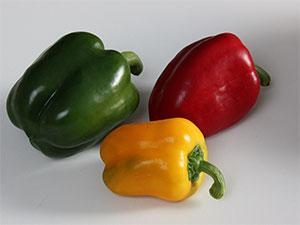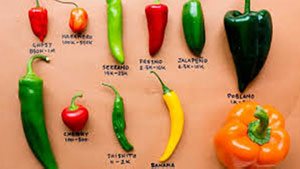Black Pepper or Bell Pepper?? The Great Pepper Confusion
You know that moment in the kitchen when a recipe says “add pepper” — and you freeze mid-stir, staring at your spice rack and your vegetable drawer? One has tiny black dots that make you sneeze, and the other looks like it should be wearing a cape at a vegetable superhero convention.

Ladies and gentlemen, welcome to the Pepper Identity Crisis. Today, we’re diving into one of the most misunderstood family feuds in the food world: black pepper vs. vegetable peppers (aka bell peppers, chili peppers, and all their colorful cousins).
🧂 Meet Black Pepper: The Tiny Trouble-Maker
Let’s start with black pepper — the quiet overachiever of the spice world.
You know, that little grinder that lives next to the salt and somehow ends up in every recipe.

Black pepper comes from the Piper nigrum plant, a climbing vine native to India. It produces small green berries called peppercorns, which are dried until they shrivel up and turn black.
Basically, black pepper is the spice version of a raisin.
But don’t be fooled by its small size — this stuff has power. One sneeze while grinding it and suddenly you’re conducting an impromptu performance of Beethoven’s Allergy Symphony.
Black pepper brings a sharp, earthy flavor — not fiery, just a pleasant tickle that wakes up your taste buds and makes everything taste fancier. It’s like the culinary equivalent of wearing a blazer: instantly makes your dish look more serious.
🌶️ Now Enter: The Vegetable Peppers
And then we have the vegetable peppers — the bold, colorful, party animals of the plant kingdom.
These peppers come from the Capsicum family, which is basically the opposite of Piper nigrum. Instead of growing on vines, they sprout on cheerful little bushes, showing off in shades of green, red, yellow, and orange.
You’ve got:
- Bell peppers – Sweet, innocent, and vitamin-packed. The “Disney princess” of the group.
- Chili peppers – Fiery, dramatic, and likely to make you question your life choices.
- Jalapeños, habaneros, and ghost peppers – The adrenaline junkies. They show up, burn everything, and leave chaos in their wake.

These peppers owe their heat to capsaicin, a compound that tells your brain, “We’re on fire!” even though you’re not. (Okay, maybe just a little.)
In contrast, black pepper gets its mild kick from piperine, which is way more polite — like a friendly tap on the tongue compared to a chili pepper’s flamethrower kiss.
🔬 Science Break (Because We’re Fancy)
Let’s clear this up once and for all:
| Feature | Black Pepper | Vegetable Peppers |
|---|---|---|
| Scientific Name | Piper nigrum | Capsicum annuum (and friends) |
| Origin | India (Malabar Coast) | Central & South America |
| Main Compound | Piperine | Capsaicin |
| Flavor | Sharp, earthy, mild heat | Sweet to fiery hot |
| Type | Spice (dried fruit) | Vegetable (fresh fruit) |
| Used For | Seasoning, cooking, sneezing | Salads, stir-fries, self-inflicted pain |
So yes — even though they share the same name, black pepper and bell/chili peppers are about as related as a cat and a cactus.
Both cool in their own way, but try explaining that to your tongue when you mix them up in a recipe.
🍳 When Pepper Goes Wrong: Kitchen Confessions
I once knew someone (okay, it was me) who thought “pepper sauce” was made by grinding up bell peppers. I ended up with a colorful smoothie that looked like Christmas and tasted like regret.
Moral of the story: never assume the peppers in your fridge and the pepper in your shaker are the same thing. One will spice up your meal; the other might ruin your blender.
Another classic mistake? Someone adds “a teaspoon of black pepper” when the recipe meant chopped chili. Ten minutes later, everyone’s politely coughing and saying, “Wow, this stew really opens the sinuses.”
🥗 How to Use Each Without Chaos
Let’s be practical (and save dinner):
- Black Pepper: Sprinkle it on literally anything — eggs, pasta, soups, popcorn, even strawberries (seriously, try it). It’s universal.
- Bell Peppers: Great raw in salads or cooked in stir-fries, fajitas, and stuffed pepper dishes. They’re sweet, crunchy, and safe for spice wimps.
- Chili Peppers: Use carefully. A little adds excitement; too much turns dinner into a survival challenge.
And remember: if your food is too spicy, milk helps. Water? Not so much. Water just spreads the capsaicin around, giving your mouth the full “lava tour experience.”
🌈 A Fun Fact to Impress Friends
Here’s a twist: “Pepper” the name is just a historical mix-up.
When early European explorers like Christopher Columbus arrived in the Americas looking for pepper, they found chili peppers instead. Since they had no idea what they were doing (classic explorer move), they called them “peppers” anyway.
And the name stuck.
So technically, we’ve been misnaming chili peppers for 500 years. But hey, at least it’s consistent with how we name “French fries” (spoiler: not French).
💡 Final Thoughts: A Tale of Two Peppers
So there you have it:
- Black pepper is the wise, spicy elder who adds class and flavor to your meal.
- Vegetable peppers are the colorful, loud younger siblings — fun, dramatic, and occasionally dangerous.
Both are amazing in their own way, but don’t mix them up unless you want dinner to become a chemistry experiment.
Next time someone asks you to “pass the pepper,” take a second and clarify:
Do they want a polite little sprinkle… or a mouthful of chaos?